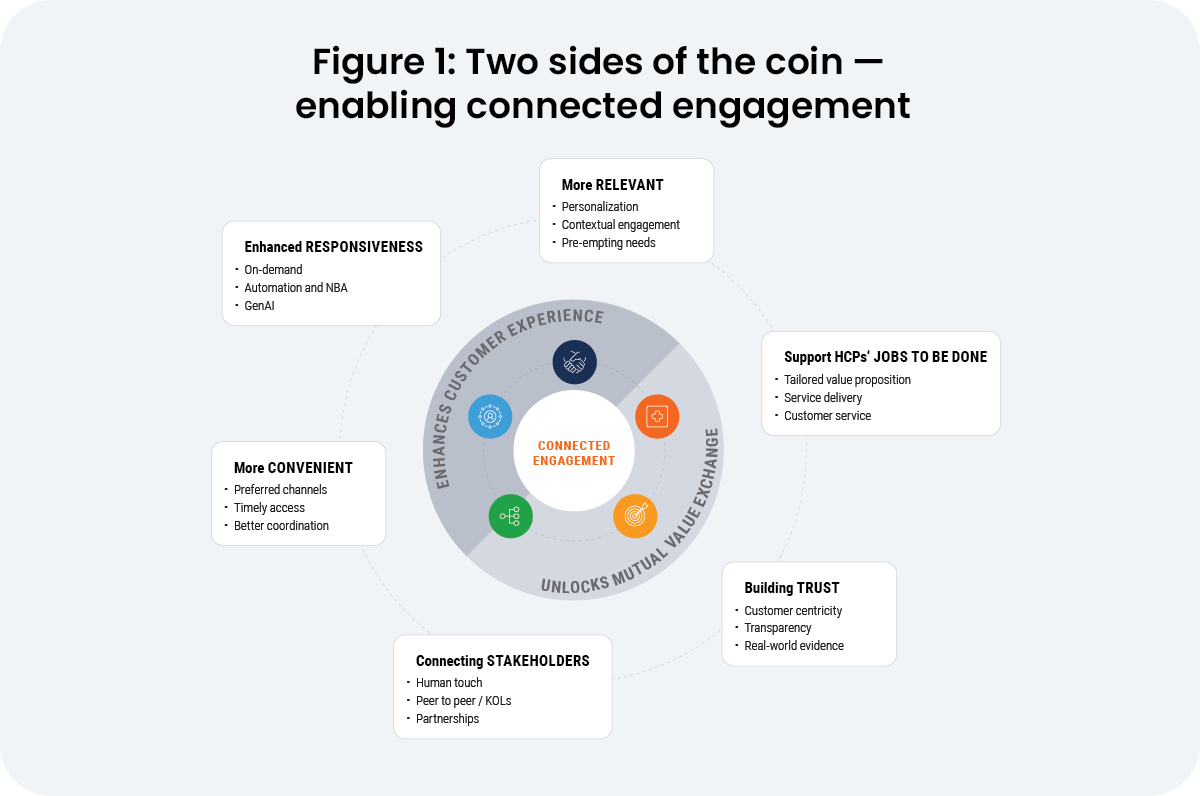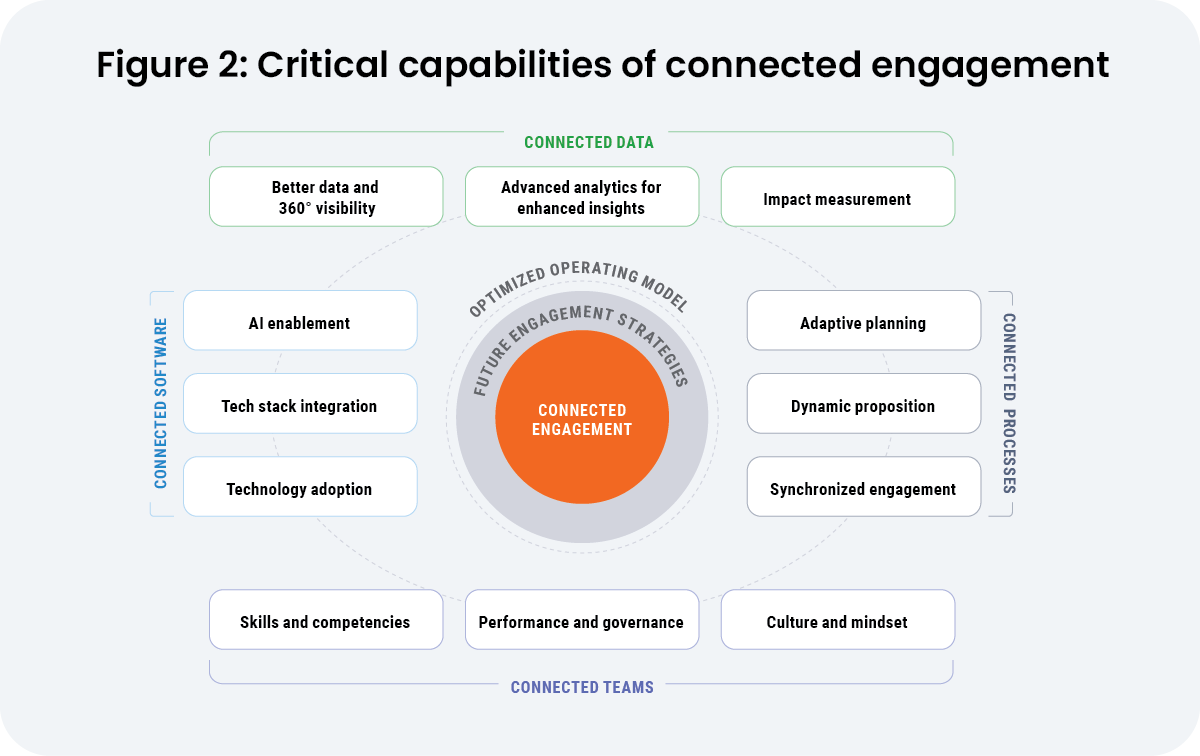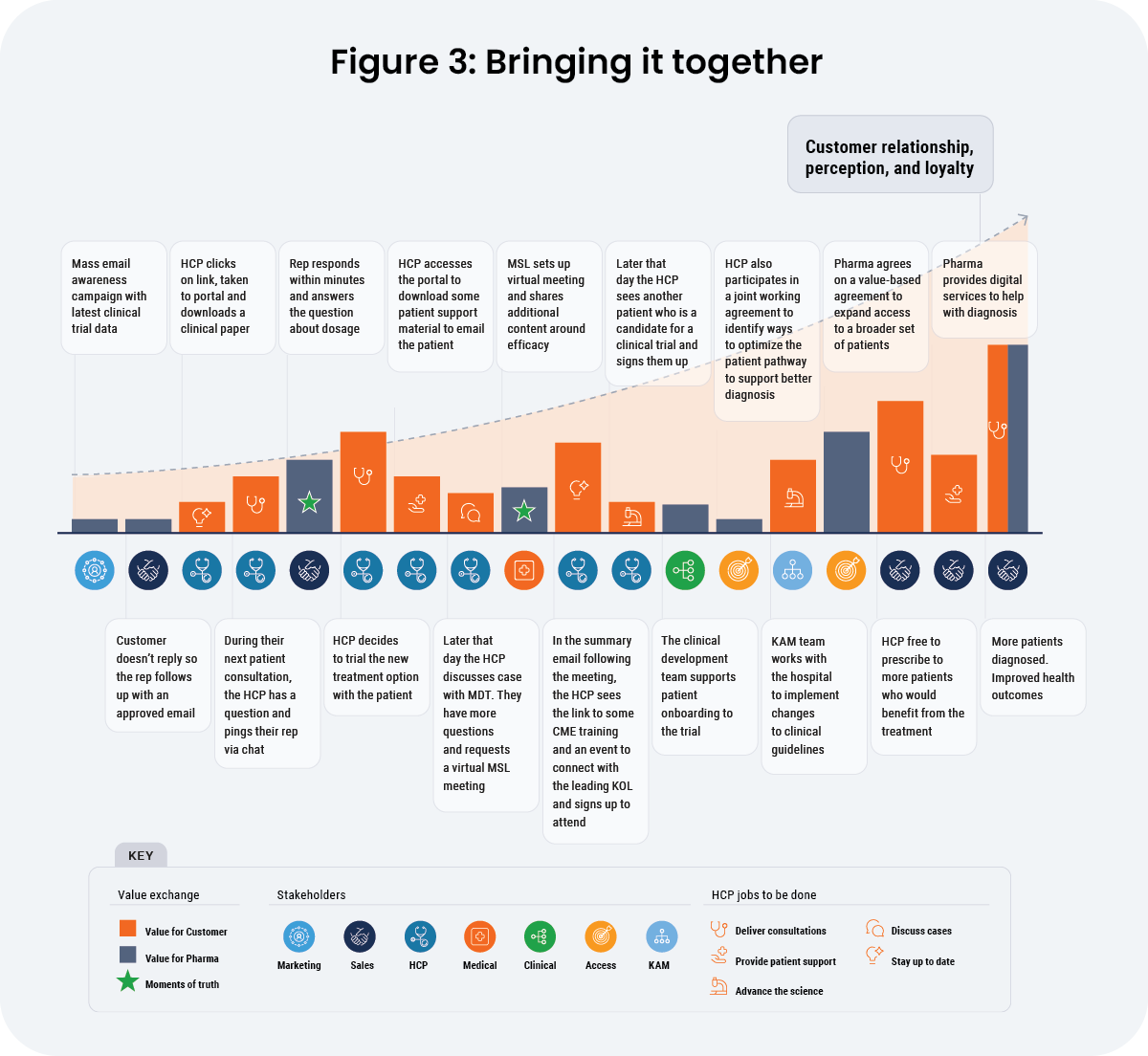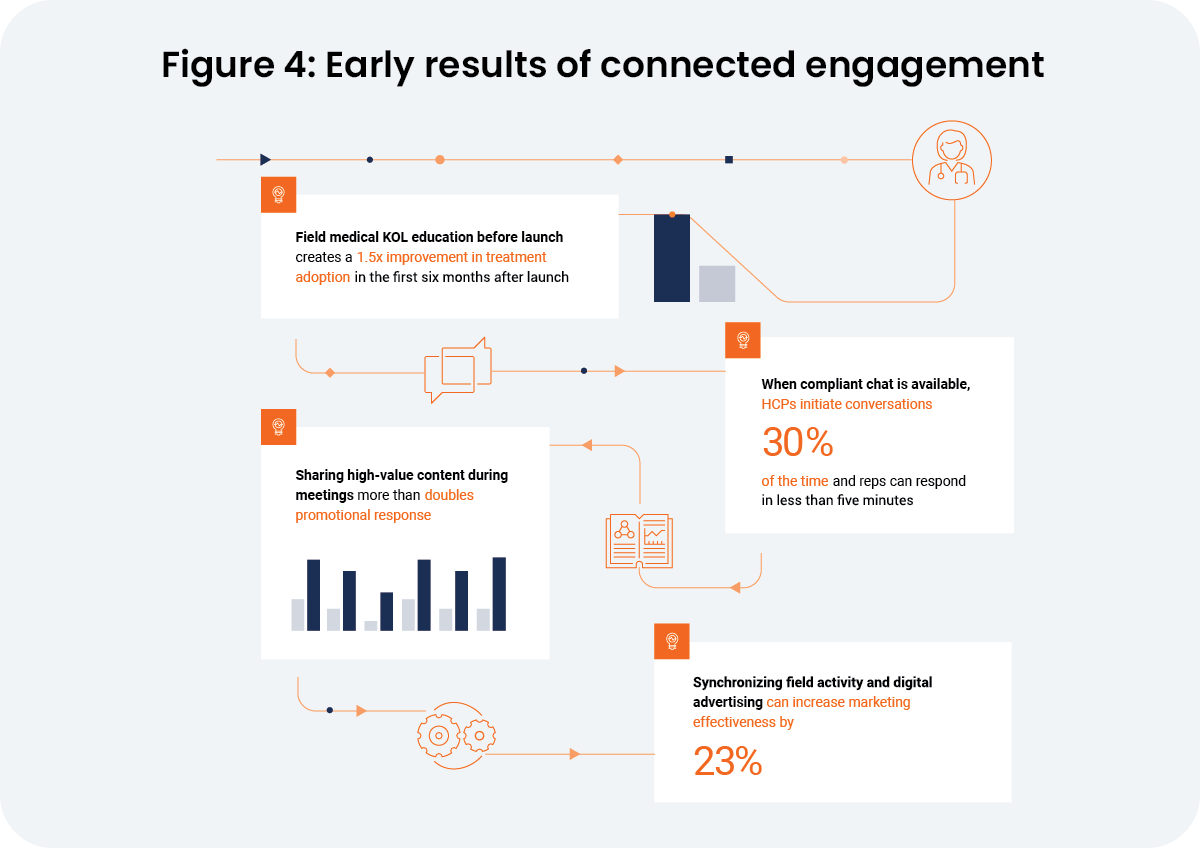Articles
Achieving Customer Centricity in Biopharma
A commercial leader’s guide to enabling connected engagement

Biopharma mission statements often highlight the concept of better together, emphasizing the strength of team harmony in meeting the needs of healthcare professionals (HCPs) and patients. However, as commercial teams optimize within their functions, they often take unique paths to engage and serve customers. These functional silos and traditional ways of working make the mission harder, add inefficiency and cost, and reduce the field force’s impact.
True customer centricity is achievable using a more dynamic and interconnected approach across sales, marketing, medical, and service teams. Adopting a ‘connected engagement’ strategy strengthens relationships with HCPs and healthcare organizations (HCOs) to support commercial objectives. Two critical elements underpin successful connected engagement (Figure 1):
- Mutual value exchange: Both biopharma and customer must derive significant value from the relationship. For commercial teams, this requires understanding and addressing each customer segment’s ‘jobs to be done’ — the unique and evolving things they care about and are trying to achieve.
- Enhanced customer experience: Providing an exceptional customer experience is paramount. Interactions move beyond transactional when commercial teams collaborate to be ever-relevant and responsive, engaging customers on their terms.

Connected engagement in practice
Prioritizing connected engagement helps commercial teams consistently predict, preempt, and coordinate relevant customer responses. Your sales, marketing, medical, and service teams can mobilize resources around the right value proposition for an HCP or account at the right time. The action could be as simple as answering a question via compliant chat or as complex as collaborating with an HCO on a shared-value initiative.
Connected teams with simple processes and unified data and technology also help customers progress along their journey faster and more efficiently. An inbound service call, for example, will instantly trigger a recommendation for the associated rep to send a specific piece of content through the HCP’s preferred channel. HCPs, KOLs, and others who receive the necessary data or materials gain time to focus on the patient or challenge.
The connected engagement approach challenges old engagement models. It forces teams to reconsider long-standing but siloed KPIs in favor of shared success measures. It will also set the stage for further innovation, such as AI capabilities embedded in commercial workflows that save time and manual work (Figure 2).

Actions supporting HCPs’ jobs to be done
Because customer journeys aren’t linear, predictable, or time-bound, connected engagement requires you to understand a customer’s unique journey, know where they are on the path to achieving their goals, and respond timely and effectively every time.
The sample customer journey in Figure 3 shows key events or actions supporting an HCP in a connected engagement model. Value exchange occurs each time the customer comes into contact with the biopharma, regardless of the person, team, or channel. There’s visibility across the spectrum, and unique processes, data, and systems no longer present hurdles to customer centricity.
The bars within the figure show that the value is not always uniform. At times, the interaction will deliver greater value to the HCP. These ‘moments of truth’ are essential connections you must get right. HCPs accept interactions that deliver more value for your organization if you’ve built trust and goodwill into the relationship. When teams succeed, they strengthen the relationship and the HCP’s perception of your product and company to foster loyalty.
Connected engagement delivers significant business value. It requires precise coordination, making teams more efficient in prioritizing high-value relationships and eliminating wasted resources on redundant actions. Finally, connected engagement promotes customer conversion with the potential to change or reinforce desirable behaviors, which is critical to driving faster uptake at launch and, ultimately, growing sales and margins.

A synchronized approach drives results
Early movers are disrupting old engagement models by unifying data and technology. The synchronized approach is driving results. The data in Figure 4 shows that well-coordinated commercial teams extend the duration and frequency of conversations with HCPs and respond faster and more precisely to customer needs.

1 Source: Veeva Pulse Field Trends, Q1 2024
Essential groundwork may predict your success when using AI to improve customer engagement: Creating an integrated customer data foundation will deliver the best insights and value. In cases where AI tools and the resulting insights are well integrated, commercial teams can easily understand and act on the data to augment decisions, keeping customers at the center.
If aligning your commercial teams has become difficult, reset by focusing on the attributes that promote customer centricity. Reorient commercial teams around the shared purpose of progressing customers along their journey to help drive the coordination required for their joint success. Gauge whether your commercial tools add unnecessary complexity or remove barriers to treatment for shared mutual success with customers.
Connectivity is the glue that holds everything together. When seamless connectivity breaks down — whether internally or externally — so does the customer experience. Attending to these three layers of connectivity is critical to success in meeting your mission:
- Internal connectivity: Cross-functional alignment is essential. From integrating plans and linking clinical and medical insights to connecting sales and marketing, these connections form the foundation of effective engagement.
- Customer connectivity: This is where your commercial and medical teams deliver value. From answering an HCP’s inbound question to linking a patient with a clinical trial, each connection strengthens your ability to meet customer needs.
- External connectivity: The ultimate goal is to help customers make better connections — whether by ensuring patients access the right treatment or supporting coordinated care across healthcare systems.
By prioritizing connected engagement, we make customer centricity scalable, repeatable, and impactful, driving better patient outcomes and business success.
Learn from biopharmas achieving operational simplification and customer-centric connected engagement.